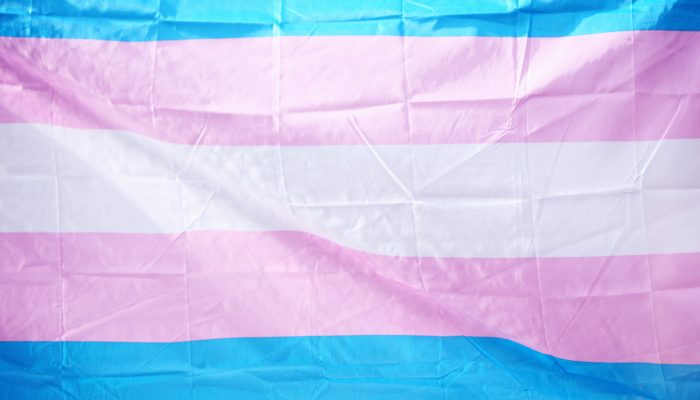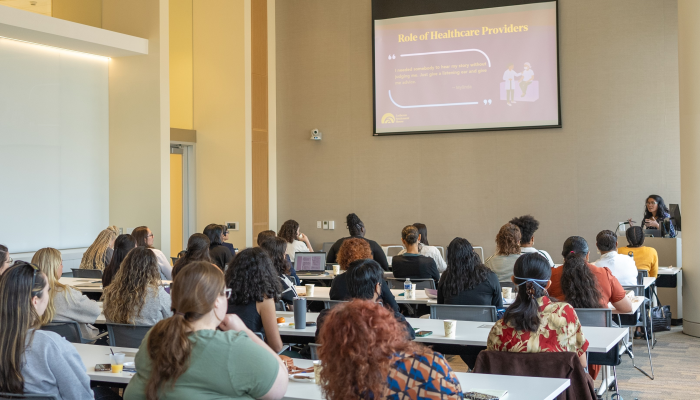Written by Alexandra Lenihan, Office of Domestic Violence Strategies
Data shows that transgender people, and especially transgender women of color, experience a high rate of violence, including intimate partner violence. In the most recent National Transgender Survey, nearly half of those surveyed reported being verbally harassed because of their transgender identity in the previous year alone. And about one in 10 reported being physically attacked in the last year. Over half of respondents reported experiencing intimate partner violence (IPV) in their lifetime, a rate that is higher than the overall U.S. population. Transgender women and transgender people of color reported especially high rates of IPV victimization.
These numbers tell us that physical violence is not rare. And violence doesn’t come out of nowhere. Attitudes and language that exclude transgender people can lead to physical violence and harm. Transgender survivors of IPV may not feel welcome or safe to talk about their experiences of abuse, and abusive partners may feel more entitled to behave abusively.
We can help create safer spaces for the transgender people in our workplaces, social circles, families, and communities by becoming reliable trans allies.
Here are a few ways you can do that:
Respect pronouns
When someone tells you their pronouns, use them. It’s really that simple!
When you meet someone new, feel free to share your pronouns and ask them for theirs, that way you won’t use the wrong pronouns – or misgender – a new friend or acquaintance. Especially if you’re not sure of someone’s pronouns, just ask! Be clear and direct. You can say:
- “Hi Sam! Nice to meet you, my name is Alex and I use she/her pronouns. What are your pronouns?”
Respecting someone’s pronouns means you use the correct pronouns both when that person is present and not present. Their pronouns are part of their identity, and you wouldn’t call someone by a different name when they aren’t there, so don’t use the wrong pronouns.
This is one of the best ways to establish trust with another person and show them that you are someone they can feel safe with to share information.
If you’re on a virtual call, you can normalize sharing pronouns by sharing your own when you introduce yourself, or by putting your pronouns on the name that is displayed on the screen, like this: “Alex, she/her.”
If you mess up, correct yourself and move on
Do your very best not to, but you may make a mistake. If you accidentally use the wrong pronouns or the wrong name, simply correct yourself and move on. Don’t dwell on it and make a scene, drawing attention the person when they didn’t ask for it.
For example:
- Do: “When she, I mean, they completed the document, they sent it to me.”
- Don’t: “When she, oh my gosh, I’m so sorry. Please forgive me! I’m so, so sorry. I mean to say they I’m just still getting used to it! Ok, when they completed the document, they sent it to me. Sorry!”
Learn and use inclusive language
Consider how you can use gender-inclusive language when possible.
| Instead of gendered language… | Try these gender-inclusive swaps: |
| Ladies and gentlemen, guys and gals | Folks, everyone, team, y’all, youse |
| Ladies’ room, men’s room | Restroom, bathroom |
| Maternity leave, paternity leave | Parental leave |
| That man over there | That person with the white shirt and red backpack over there |
If someone is telling you about their relationship, do not assume the gender of the other partner. Ask! You can use gender-inclusive language like “partner” until they tell you how they refer to someone. Follow their lead.
Using inclusive language can set the tone to establish that transgender and gender non-binary people are welcome in your space, and that they will be respected. Gender-inclusive language is usually just as descriptive and sometimes more specific, helping everyone.
Be clear about messages related to intimate partner violence (IPV)
Transgender survivors of IPV may be afraid to reach out for help. Let the survivor know they are not responsible for an abusive partner’s behavior, regardless of their sexual orientation or gender identity. They also have the right to seek help from abuse.
Some supportive statements you can start with are:
- “Thank you for telling me. It’s not your fault. You deserve to be safe.”
- “I’m so sorry you experienced that. You don’t deserve to be treated this way. How can I help you?”
Also make it clear that people should be accountable for their own behavior. Sexual orientation or gender identity are not excuses for harming a partner.
Educate yourself
Take time to learn about the transgender experience and get to know some trans activists and trans activists of color. There is a wealth of resources by trans-led organizations online that are accessible and free.
These are all simple and easy steps. Know that taking the time to become familiar with this information on your own helps create a safer world for transgender people.
Resources for help:
- Get help for yourself or help someone else experiencing domestic violence or sexual assault
- Know your rights – LGBTQ people are entitled to services for IPV. Read this factsheet on LGBTQ rights to IPV services.
- Use this guide on making an IPV safety plan for transgender and non-binary people.
- People who want to stop harmful behavior toward their partners can contact Courdea for help.
- Read more about IPV in LGBTQ populations.
- Visit Healthy Minds Philly for national and local LGBTQ resources.
Additional resources:
- This parents’ guide gives examples of how to use gender-inclusive language with your family and children.
- Use this guide for information on how to support the transgender people in your life.
- Learn about gender-inclusive language in the workplace.
- Employers can learn how to support transitioning employees.
- Celebrate LGBTQ Pride in Philly!




